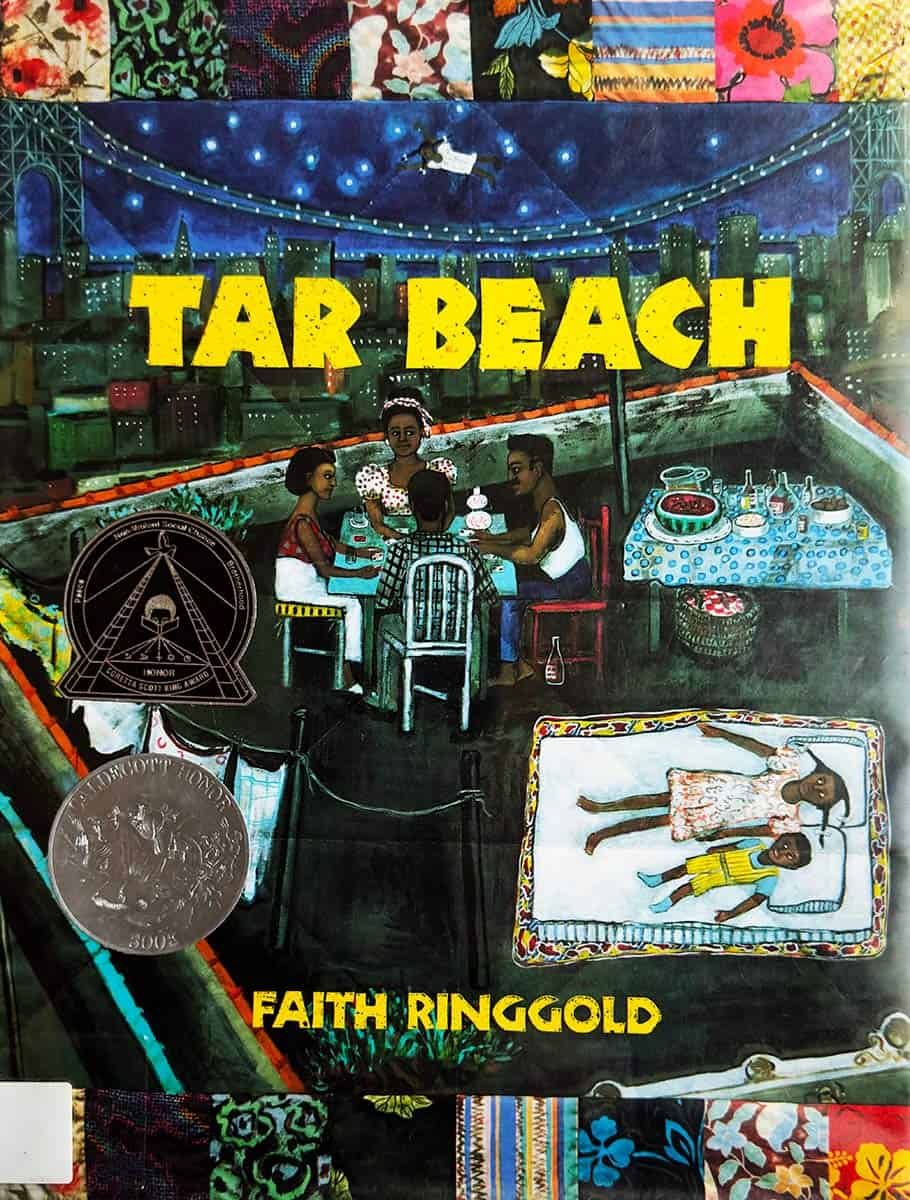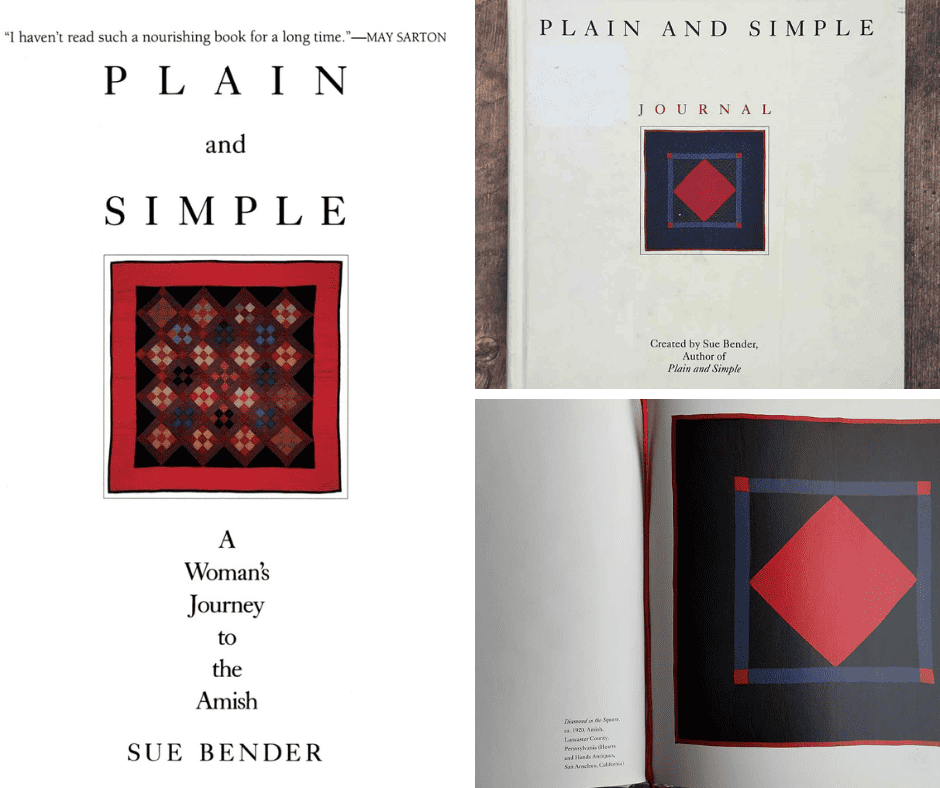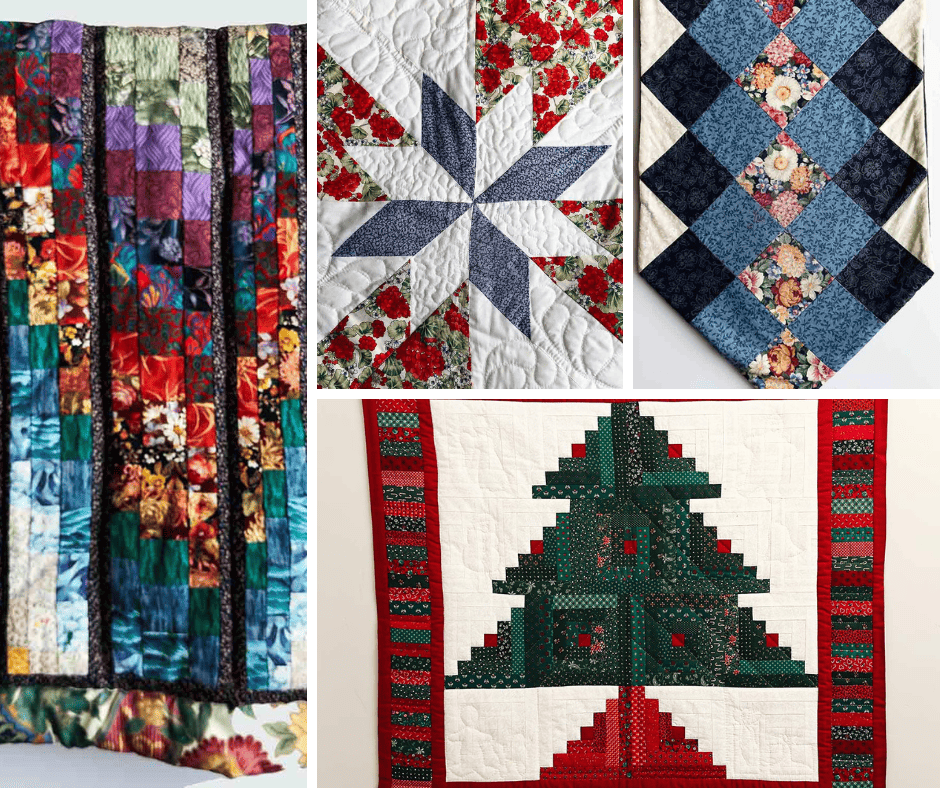Inside: Have you ever heard of or seen story quilts? They are quilts that tell a story in unique ways and have helped shape American history. Native Americans, the Amish, Appalachia, and African-American quilters—are known for their beautiful story quilts! Learn how to make story quilts from book covers!
Story Quilts
I am not a quilter and neither were my ancestors. From journals going back seven generations, there is no mention of quiltmaking. However, my husband’s ancestors boast many talented quilters.
Quilt making can be traced back to medieval times, originating in Europe, India, the Far East, and beyond. In Pakistan, they are called Ralli quilts and in India, they are called Kantha quilts. The early settlers in America to the present have made quilt-making an art!
These early quilts were made for practicality—to keep their families warm at night, to hang on walls to keep out cold drafts, or for decorative purposes. Today, quilts are made for dozens of reasons.
To narrow the subject, let’s focus on some of the diverse STORY quilts made in America and the history behind them. And activities to celebrate talented quiltmakers in your family tree.
Every Quilt Tells a Story…
Story quilts include pictures, images, symbols, fabrics, and textures used to tell a story of the family’s life and experiences. Story quilts tell stories in two ways: by the way the quilt is crafted or the story of the person who quilted it—both ways make the quilt memorable.
Here are some examples of story quilts:
- Native American Star Quilts
- African-American Story Quilts
- Appalachian Story Quilts
- Amish Quilts
Native American Star/Story Quilts
Book: When the Stars Came Home by Brittany Luby
This book is a charming story about a Native American boy, Ojiig who moves to the city with his family. To help him adjust, his parents make a special quilt stitched with family stories that will wrap Ojiig in the warmth of knowing who he is and where he came from. Using the power of stories and a quilt-making tradition, Ojiig’s new place finally feels like home.
In the late 1800s, missionaries from the Dakota Presbytery introduced the art of quilt-making to the Native American reservation. Women learned to make Star Quilts that included colors and designs that were indigenous to the Sioux and Assiniboine cultures and became symbols of honor and achievement. These story quilts became a source of pride and tribal identity.
Morning Star quilts have eight-pointed stars that fill most of the quilt top. Some of the stars are stacked on each other like the example above. The Lakota Symbol for the Sun-Earth connection was an inverted triangle that symbolized the stars and the sun. The triangle on the bottom symbolizes the earth meaning the sun and earth are connected in powerful ways.
African American Quilts: The Quilters of Gee’s Bend, Alabama
The Quilts of Gee’s Bend by Susan Goldman Rubin
In 2002, I read a story about the African-American women quilters of Gee’s Bend, Alabama. For generations these impoverished yet artistic women have made quilts using scraps of overalls, aprons, bleached cornmeal sacks, etc., to design unique one-of-a-kind quilts. Remarkably, they resemble works of art seen in museums.
Each quilt has a “back story” about the women who created them. Some came here as slaves, and almost all were very poor, but their quilts tell stories of generations of women who were artists at heart. Geometric shapes, interesting patterns, and vibrant colors dominate their story quilts.
Their knowledge of quilt-making has been passed down from one generation to the next and many are 4th and 5th generation quiltmakers.
Initially, they made the quilts to keep their families warm, but in 2002, their quilts were discovered and featured in an exhibition at the Museum of Fine Arts, in Houston, Texas, and at the Whitney Museum in NYC. This exposure, allowed them to profit from their quilts and help support their families as they shared their story quilts to the world!
Faith Ringgold Story Quilts
Book: Inspirations: Stories About Women Artists(Faith Ringgold) by Leslie Sills
Faith Ringgold, an inspiring African-American artist, storyteller, and quilter was born in Harlem in 1930. Her mother, a fashion designer, taught her to work with fabrics as her ancestors had done before her. Faith’s mother, grandmother, and great-grandmother all sewed and made quilts.
Faith was inspired by “tankas”—Tibetan paintings mounted on cloth. She decided to work with several different mediums to create her story quilts and began making unstretched acrylic paintings on canvas with beautiful borders like the “tankas.”
Her mother had also taught her the art of storytelling which allowed Faith to combine her political ideas, her love of African art, and her experiences growing up in Harlem. She turned her experiences into “soft-art” narrative story quilts using bright colors, bold patterns, and textiles.
One of her most famous story quilts—Tar Beach resides at the Guggenheim Museum in New York. Tar Beach was also Ringgold’s first children’s book that won the Coretta Scott King Award for illustration and was named a Caldecott Honor Book.
Story Quilts of the Underground Railroad
Book: Hidden in Plain View by Jacqueline Tobin & Raymond Dobard
This book is fascinating although some discount its authenticity. I carefully read the documents, interviews, and footnotes of the authors supporting the validity of a code sewn into quilts made by the African-American slaves navigating the Underground Railroad. One of the authors is a historian, and the other is a scholar and well-known African-American quilter.
My consensus (and I’m not a historian but I am a researcher) is that many of their claims are valid. Read it and decide for yourself.
The premise is the African-American slaves involved in the Underground Railroad had certain quilt patterns containing secret codes and instructions that helped steer them to freedom.
Patterns such as “the Charleston code,” “wagon wheel,” “bear’s paw,” and “tumbling blocks,” and different kinds and sizes of knots contained secret messages that directed them on their journey.
What I found most interesting is that these slaves were involved in a sophisticated network that combined African textile traditions with American quilt practices to convey messages that were essential for escape along the Underground Railroad.
Story quilts have many guises!
Appalachian Story Quilts
Book: Story Quilts: Appalachian Women Speak by Shannon Hitchcock
This is a delightful book to read to your children/grandchildren to help them understand how Appalachian Women, many of whom could not read or write, told stories through their patchwork quilts made from scraps of cloth collected and recycled over time.
Sophie Page (the illustrator) uses clay, paper, fabric, and wire to illustrate the charming stories the Appalachian women told in their quilts.
Quilting was one of the first art forms in Appalachia. Women sewed story quilts illustrating a death, wedding, or other life events, kept their children warm at night, and provided beauty in their homes.
Appalachian quilts were a mix of influences from Scotland, Ireland, and German folk traditions with local Native American, Amish, and Quaker influences. Many Appalachian quilt patterns reflected their family history.
Amish Quilts
Book: Plain and Simple by Sue Bender
Many years ago, I read the book, Plain and Simple by Sue Bender. Searching for a better pattern for her life, Bender spent five summers working alongside the Amish. It was a life-changing experience.
She compared quilting with the Amish with this insightful metaphor, “How to design a life, with all the varied pieces and in the process create a pattern to live by.” Quilting with the Amish and working alongside them, she sought patterns to change her life.
Quilting helped her to “see” her life more clearly. “Move patches around. Let your patches speak to you. Let them speak for you.”—these were a few of her guides and mottos for change.
Amish quilts are distinctive and made by hand. They use sewing machines for putting pieces together, but the machines are either generator, gas, or foot-powered.
Their quilts are made from fabric remnants recycled from Amish garments—dresses, shirts, pants, etc. An authentic Amish quilt is easy to recognize because they are made from plain colored fabrics—never printed fabrics–unlike Mennonite quilts. Patterns are simple bars, diamonds, repeating squares, triangles, or other shapes.
The Star of Bethlehem quilt was one of the few pieced patterns to come to America from Europe and is the oldest and most popular quilt pattern used by the Amish.
Two Quilting Activities for Kids & Grandkids
To remember ancestors whose quilts told stories, here are two quilt-making activities we did with our grandkids.
A Copy-Cat “Gee’s Bend Quilt” Activity
I have 6 little local grandkids (ages 2-10) and activities must be simple and engaging for everyone. This activity helps kids/grandkids understand how stories can be found in quilts.
If you love reading books together, combine art and literature and make paper story quilts from the covers and pages of your kids/grandkids’ favorite books.
At a thrift shop, I found their favorite books for cheap; took them home and the grandkids cut them into different shapes—strips, circles, triangles, rectangles—copy-catting the quilters of Gee’s Bend.
We talked about the different quilters and how they told a story through their quilts. They took the pages of their favorite books and created a quilt that told a story.
Here are their finished designs:
Supplies
- 12×12” colored cardstock paper
- Copy of their favorite book (get at a thrift store)
- Scissors
- Glue
Directions
- Carefully rip out the pages and cover of the book(s) each child has chosen
- Draw circles, strips, triangles, and rectangles and cut out
- Pretend you are a quilter telling a story with your book pieces and artistically arrange each piece on the 12×12” cardstock paper.
- Glue each piece in place
- Let everyone share the story their quilt illustrates
A Tape-Resistant Snowflake Quilt
Two years ago, I had the grandkids make a Snowflake Quilt—patterned after the Christmas Tree Quilt given to me by my sister-in-law. Instead of using fabric, we used paper.
We made 16 snowflake patterns using watercolor paper, painter’s tape, and liquid watercolors. After creating snowflakes with the painter’s tape, they painted the background with watercolors. When they were dry, we removed the tape to reveal a beautiful snowflake on a bright background and assembled it all into a large paper quilt.
Click here for the directions and supply list.
Check out more ancestor posts here:
5 Fun Ways to Teach Your Kids About Their Ancestors Embroidery and Handiwork
Teaching Fiber Arts to Kids–Learn How to Dye, Spin & Weave Like Your Ancestors!





















Leave a Reply